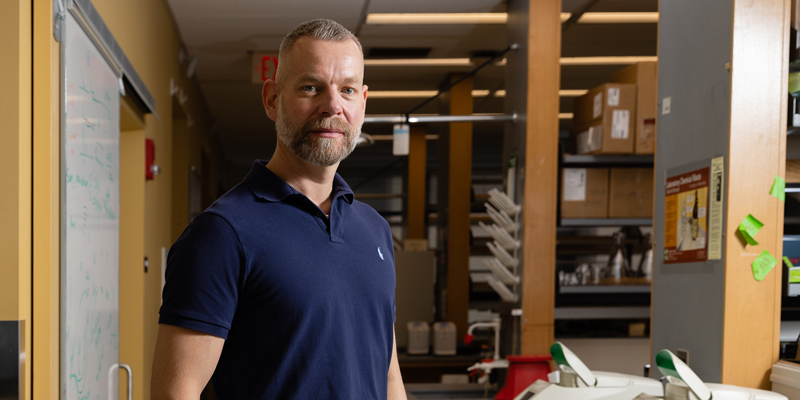
Sometimes the best way to figure out how something works is to break it. In the case of a protein, that often takes the form of altering genes so the proteins they encode have extra amino acids in various locations. An insertion that makes it impossible for the protein to do its job right likely has hit an Achilles’ heel – a region that is integral to proper function.
“The idea is, if the insertion location is important for, say, folding of the protein, or it’s in the active site of a protein, then that perturbation will be very disruptive,” explains GCD assistant professor Daniel Schmidt. “If it’s in a location that’s less important, then that perturbation will be tolerated. And by doing this in a systematic way, you can annotate regions of the protein that are critical for function and structure and regions that are less critical.”
When developed decades ago, this approach was limited to replacing or inserting individual amino acids. More recently, scientists have discovered how to add entire protein domains—a process that resembles the domain-shuffling that evolution has used to produce diverse proteins with new and useful functions. Unfortunately, until now domain insertion has been random, creating large quantities of throw-away variation that make extracting useful insights from the data difficult, time-consuming, and expensive.
Schmidt’s lab recently developed a more targeted and scalable way to insert domains into proteins. Called Saturated Programmable Insertion Engineering (SPINE), the approach makes it possible to deliberately insert domains where they are most likely to provide useful information about protein function. With the help of a new four-year grant from the National Institutes of General Medical Sciences, they’re applying it to improve our understanding of a class of membrane proteins known as Inward Rectifier K+ channels. This ion channel family is particularly intriguing because observations in different organisms indicate that it has evolved by rearranging domains. In additions, malfunctions play a role in a whole host of human disorders, from Parkinson’s disease to kidney dysfunction. And best of all, because ion channels conduct an electrical current, it’s easy to tell when they are working and when they are not.
“What we have done with SPINE is to program exactly where a domain is inserted,” Schmidt says. “This allows us to interrogate structure-function relationship in a protein at an unprecedent scale in a cost-effective way.”
The data generated from this research will make it possible to predict which kinds of K+ channel mutations will cause disease, and which are simply benign variations on the theme. It also will shed light on some of the universal rules that nature employs when assembling domains to make a functioning protein—akin to the grammar we use to make comprehensible sentences out of words. Those insights in turn could prove useful for efforts to engineer entirely new proteins for therapeutic uses.
“This, I think, is what the next generation of medicines will look like, synthetic proteins built with a specific purpose in mind,” he says. “To be able to build these proteins, we need to understand how we can build these proteins, so we don’t have to do this by trial and error.”
–Mary Hoff